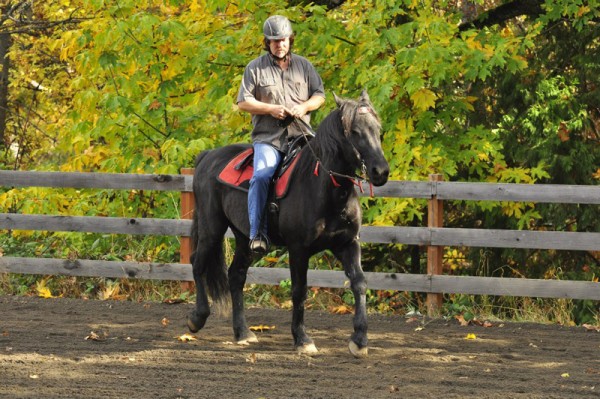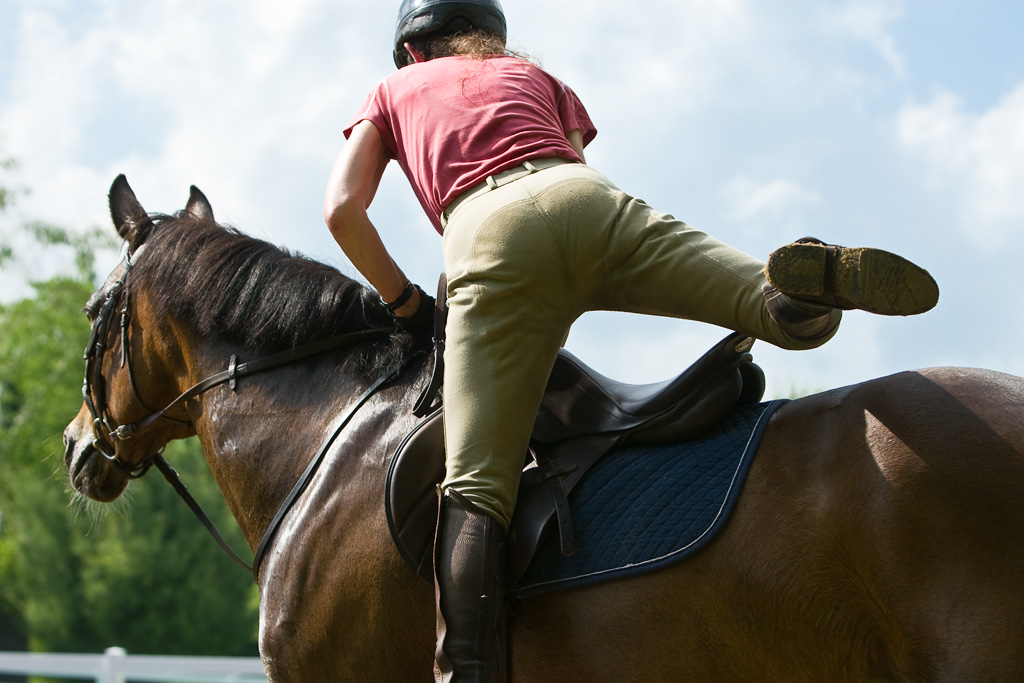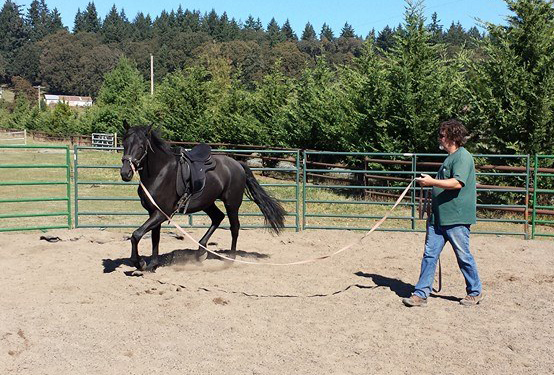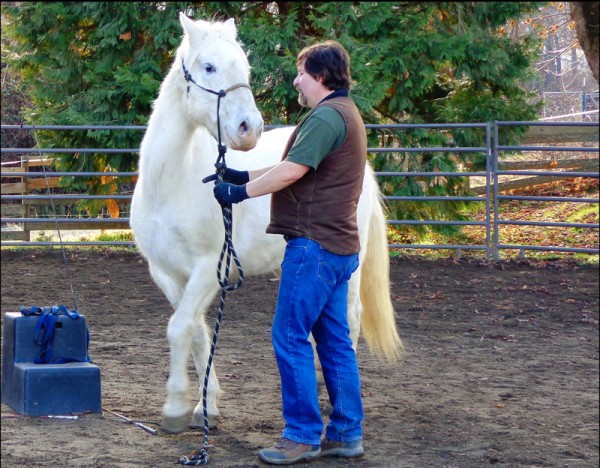When we work horses, especially young ones, we ask them to give us not only their total focus but also a very high degree of physical exertion. As with human athletes, our equine partners require some time to develop the physical and mental strength needed for something as simple as a hack through the countryside, let alone an upper level competition.
Most trainers realize a regular warm up and relaxation routine is vital to successfully training a green horse. As time goes by however, and the horse advances and becomes stronger and steadier, these warm-up routines are too often reduced or abandoned. I firmly believe this to be a mistake.
The justification for not making the warm-up a priority often sounds something like this: “Of course I had to start slow when he was young, but now his is full grown and much stronger. Now I just save the time I used to spend warming up for advancing the training.”
At first blush this appears to a logical view, and while our horses do in fact get stronger as we train them, it’s also a fact that we tend to increase the demands we put on them at a similar rate.

©Flickr/SarahPannasch
Regardless of how advanced a horse’s training, every time we ride our horses we are putting stress on them both physically and mentally. When we lead our horses from the grooming rack and climb up and head straight off into strenuous riding, we increase those stresses. Even when we are just riding the horse down the trail at a walk, the very fact that we are on their backs at all places demands on their muscles, joints and tendons that otherwise would not be present when the horse moves at liberty.
It’s easy to recognize the necessity of preparing the young horse before each training session, but the benefits of a regular warm up routine are just as vital to the finished horse. Just like the highest level of human athlete, the upper level equine athlete actually requires more time warming up, as the more advanced they are the more vital it is to warm up in order to avoid injury.
Fact is, every ridden horse, regardless of level, benefits physically from being properly prepared for each ride. Most benefit mentally as well.
Here is my typical warm-up routine:
Longeing. This is where I start with young horses. By longeing I do not mean running the horse around in circles with line attached to the bit (I never longe with the line attached to the bit) in an attempt to “Let the horse run off some energy.” I’m referring to longeing in the classical sense, where the line is attached to a cavesson as a way to ask for flexion of the poll, atlas and axis to encourage supple balance which helps to facilitate long and low work. This work is done on the circle and on straight lines, both directions, to create relaxation and free movement while warming up the back.
In-Hand Work. This is where I start with intermediate horses and it replaces the longe. It takes the form of walking at the horse’s shoulder with the finger of my lead hand at the bit and the other hand holding the rein from the far side, draped over the horse’s neck. Walking along with the horse I duplicate the hand aids from this position, asking the horse to lift the back and relax the jaw and poll first, then long and low.
For horses not yet acclimated to the bit, this work can be done with a cavesson or even a halter. I begin by working in straight lines and then move on to lateral movement—shoulder in on the circle or straight, travers and renvers, using a dressage whip to touch the horses where the legs of the rider would rest—to engage the inside hind leg.
Regardless of how advanced their training, every time we ride our horses we are putting stress on them both physically and mentally.
Under Saddle. This can replace the in-hand and longeing after the horse has reached a certain level of training. Much can still be accomplished with in-hand work even after the horse is well under saddle. This warm-up begins at the walk, again long and low at first, stretching the top line and lifting the back. Just as with the in-hand work, this is followed by lateral work to engage, supple and prepare the haunches for carrying and moving the weight off the forehand.
The rising trot is the next step and I ask the horse to be well forward, neck and head reaching forward and down. This is done to warm up and lift the back before regathering the horse into a seated trot, continuing to the lateral work again at the trot. If the horse is advanced enough to canter, I will then ride a quiet canter in a half-seat to relieve the back until the canter can be recollected and a properly seated canter is possible.

Orion warming up under saddle. I am making do demands on him, just asking for a strong walk, completely relaxed.
I hope by now that a pattern has begun to emerge. First, we relax and mobilize the mouth, relax the jaw and poll. Then we lengthen the top line, protecting the back until it lifts and rounds, before moving to lateral movement to supple and engage the hind. After this we elevate the neck and think about collection. We must start with the mind first, followed by the mouth, then the back and finally the haunches.
If you follow a similar routine you may still have issues to deal with in your ride, but you greatly lessen the chances that said issues are related to the horse’s discomfort due to cold muscles and tight tendons. A warm-up routine may even prove helpful with those problems associated with an agitated mind.
Almost as important as the warm-up is the cool-down. Simply returning to the walking sections of your routine serves as a very effective cool down. Stretching exercises (often called “carrot stretches”) done at the end of the session is another effective cooling method. These strong stretches are much more effective with done after the horse’s muscles are fully warmed up. For this reason, and to give the horse a reward for a good workout, I do them just before I return the horse to the pasture.
There is another way you can use your warm-up routine. On those days when nothing you are trying to accomplish is successful, when every attempt to move your training forward runs into a wall and your frustration level is exceeded only by that of your horse, you can fall back to something the horse knows and accepts completely. There are just some days where ending the day with a warm-up is the best you can hope for.
I cannot reiterate enough how advantageous it is to establish your own warm-up routine and use it every time you work your horse. And yes, that goes for us riders, too.
About the Author
Troy Griffith is a horse trainer and classical riding instructor based in Oregon. He is the owner and operator of Hands on Horse Training.




 September 8, 2016
September 8, 2016 
























